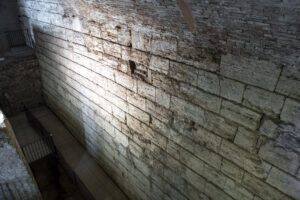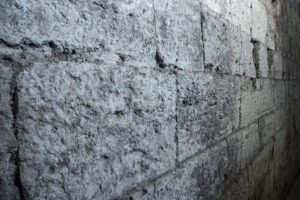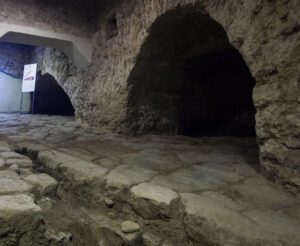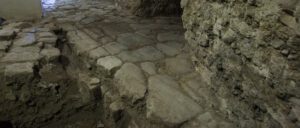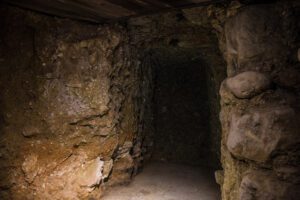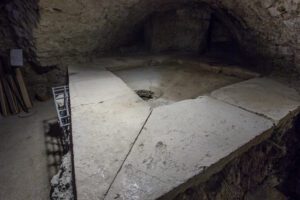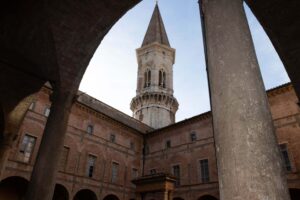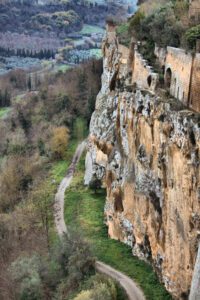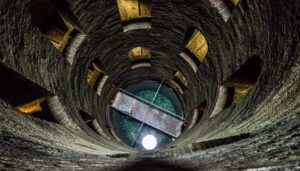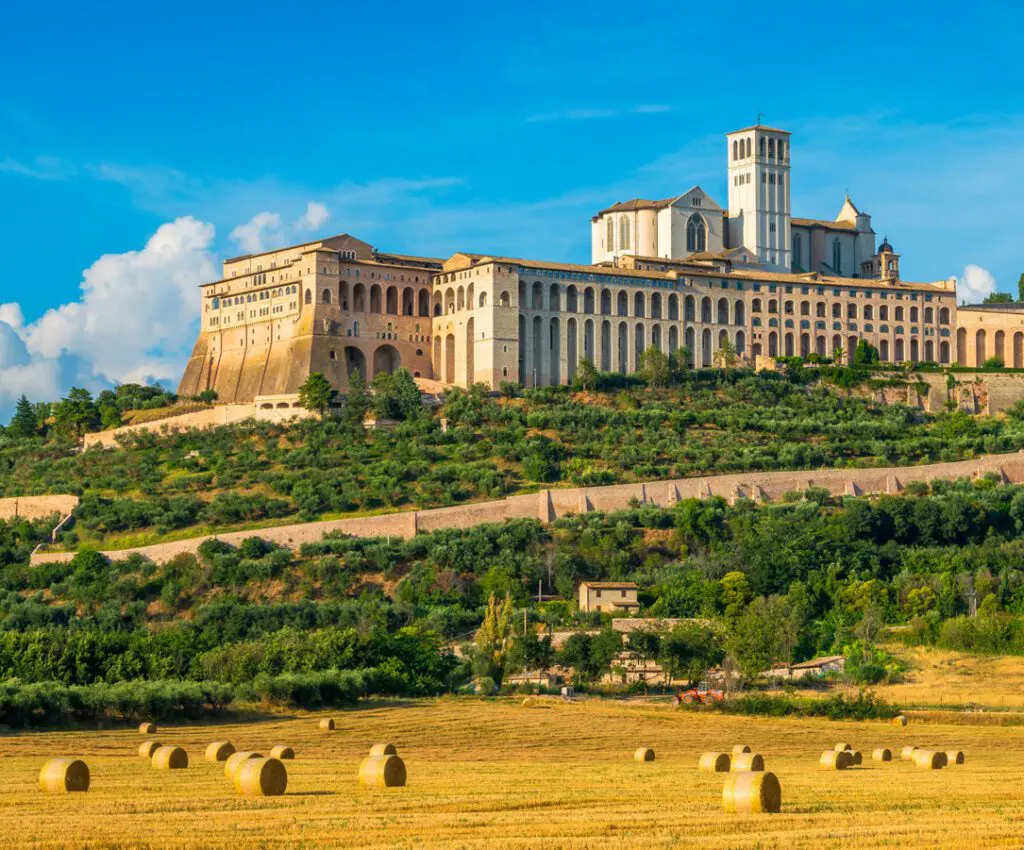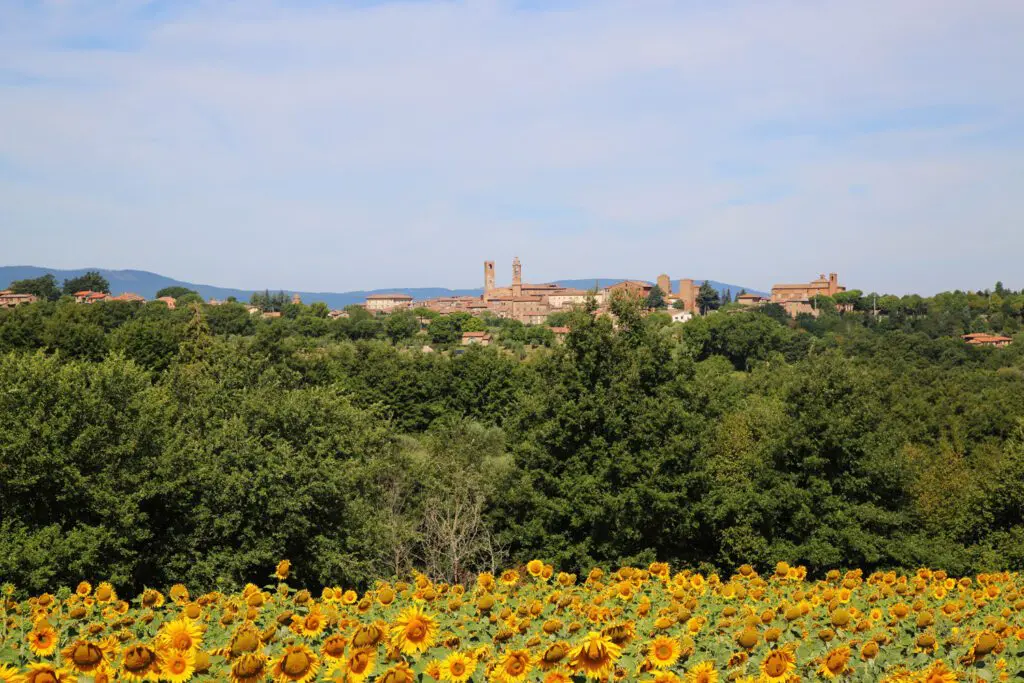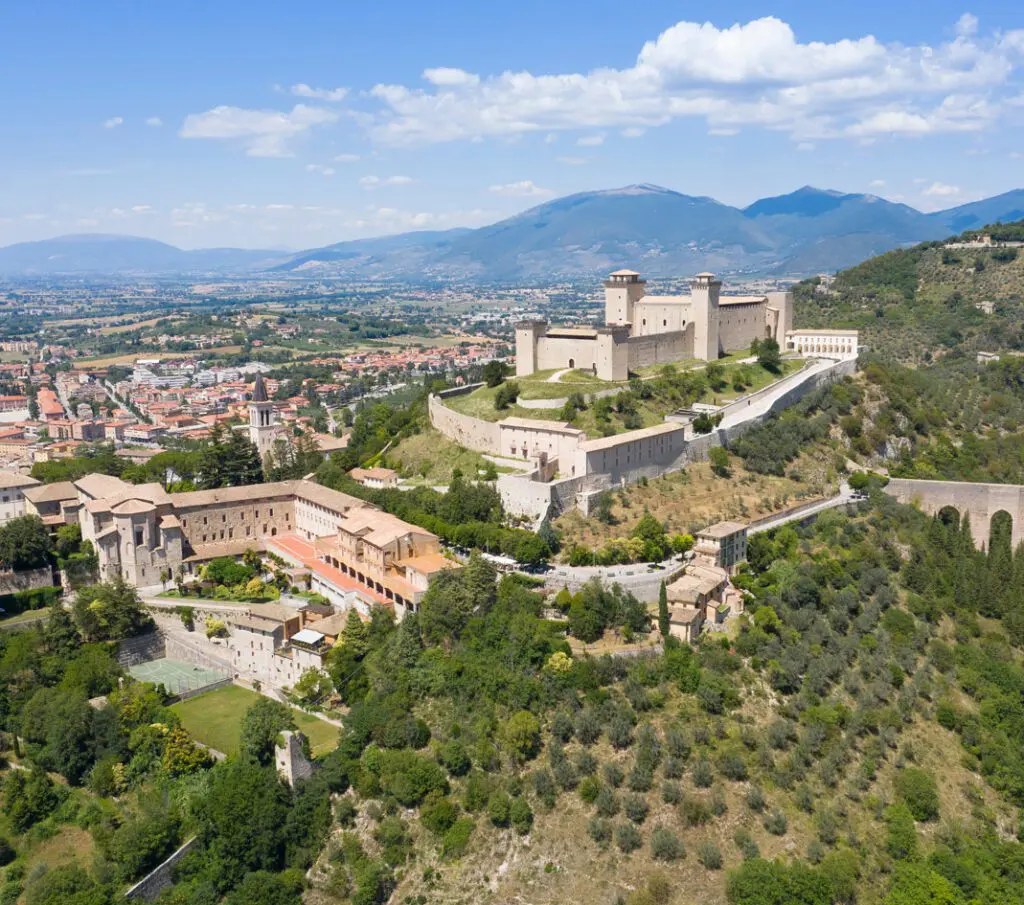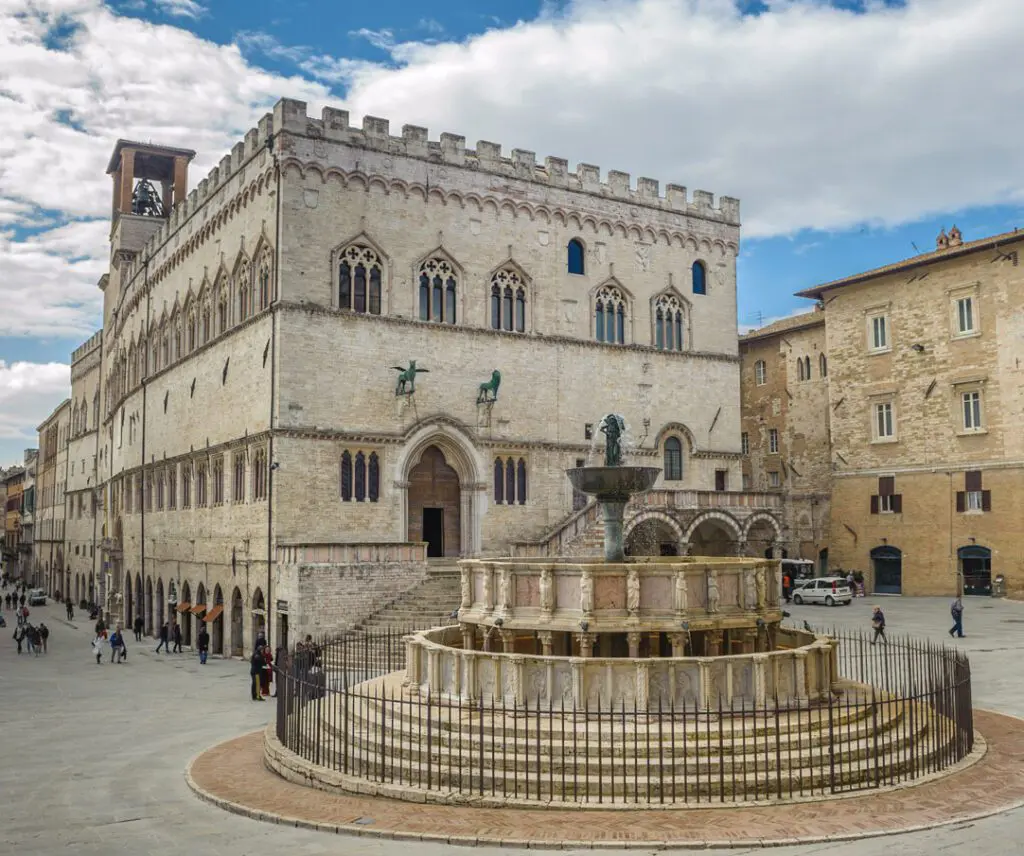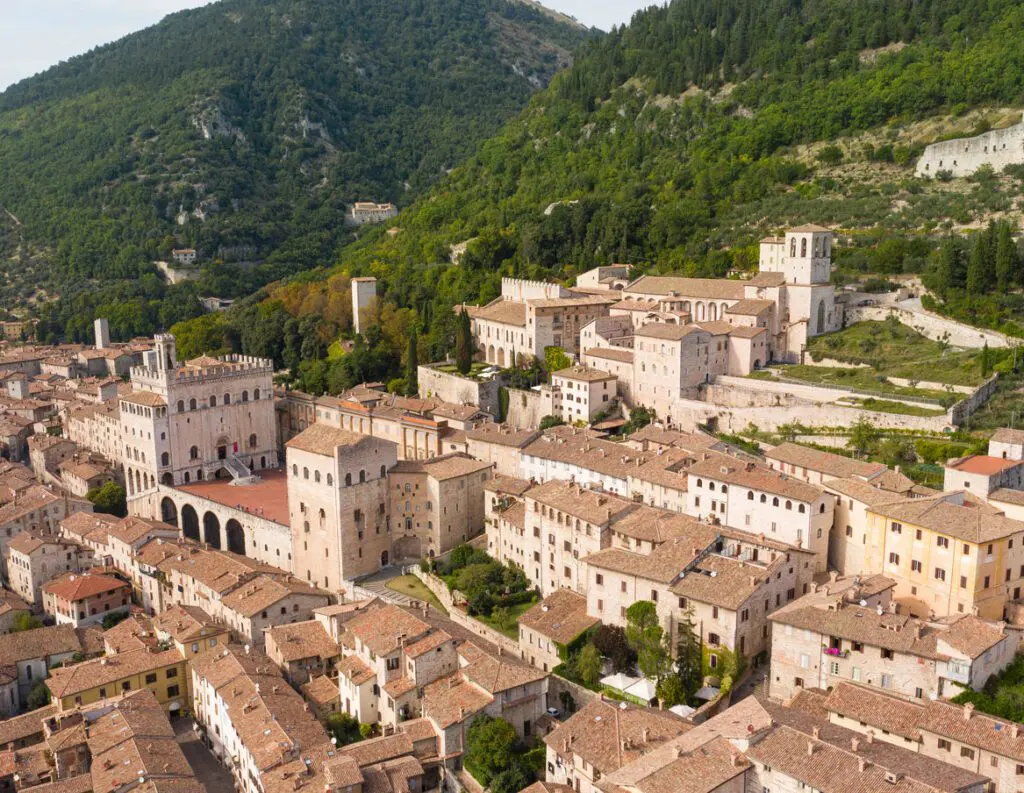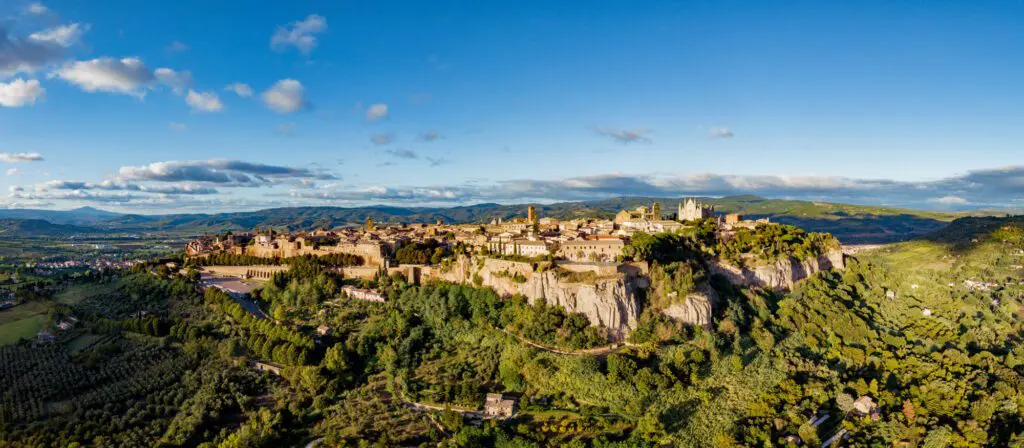Time Machine
The Archaeological Area, at the very core of the so-called Saint Lawrence “Island”, will give you the joy of a discovery trip throughout the centuries. Quite unknown to the local people themselves, these places are hidden inside the hill on which Perugia is built. By entering them, it will become clear how, starting from the Etruscans and via the Romans, then the Papal residence, the town acquired its current shape. Going from the cloister of the cathedral down into the archaeological area can be likened to a time machine that synchronizes its clock with ours more and more as we cross the centuries toward the surface.
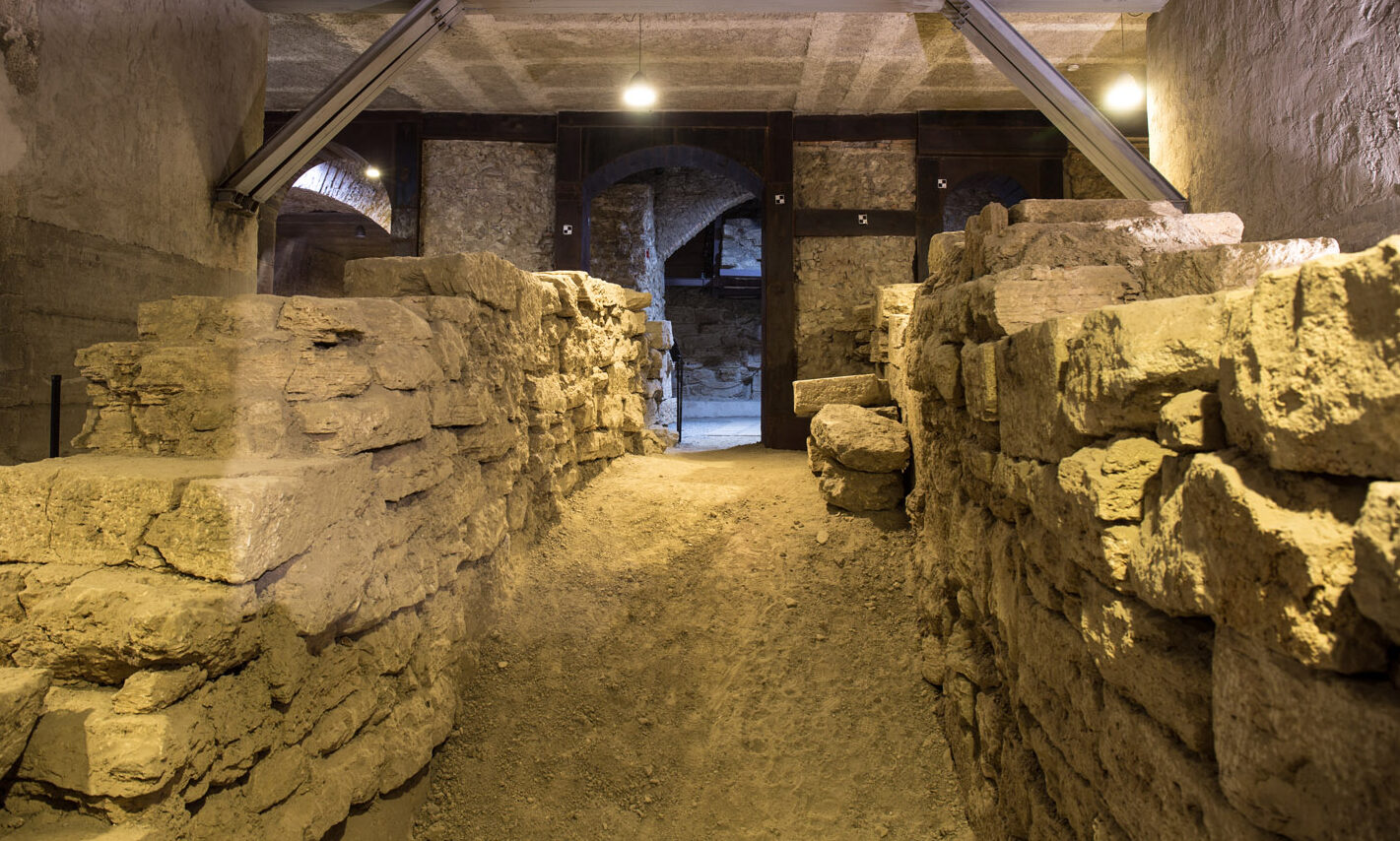
Acropolis, the Upper Town
The area where Saint Lawrence’s Cathedral and its two cloisters are found corresponds to the acropoli of the old town, Etruscan first, then Roman. The acropolis was the upper area in a town and, in ancient Mediterranean civilizations, the core of the settlement, as well as the space where the gods were worshiped. Etruscan Perugia made no exception: where the current cathedral rises, there was a sacred area upon which a first temple was built, probably dating back to the sixth century BC.
This area was destined to religious buildings and spaces, nor did this allocation change in the course of twenty-five centuries. This is why a visit to the archaeological area below the cathedral proves so significant: it will let us learn the history of Perugia from the remotest times, and study the relationship with Mystery that raises a question deep in the heart of every human being – Etruscans to nowadays.
The acropolis maintained its place and role up to the present; it was never abandoned, but, through alternate phases of destruction and reconstruction, became that which it now is.
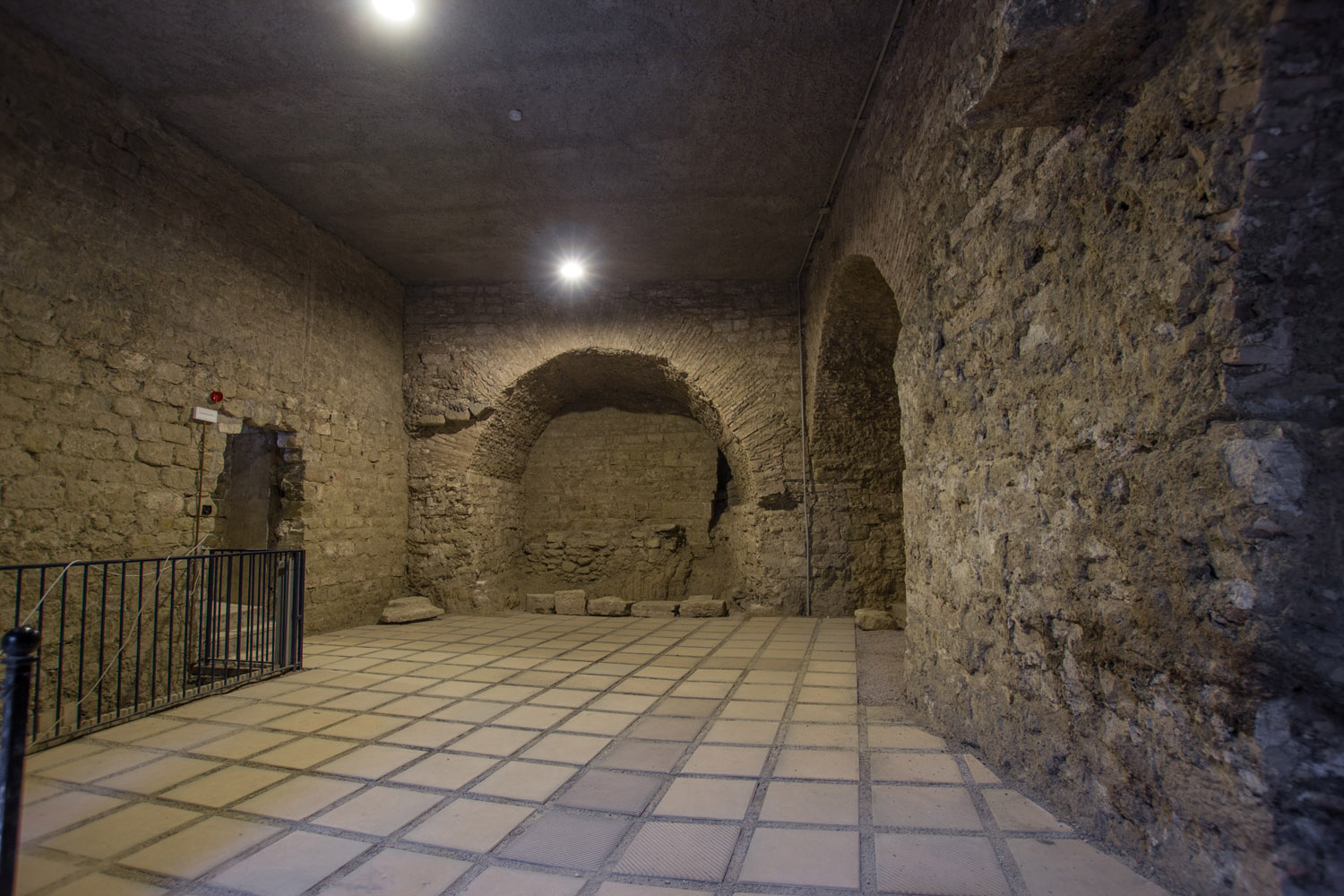
The Underground Walls
Underground, vertically aligned with the area of the high altar in the Cathedral, the foundation walls of two temples have been discovered, possibly to be ascribed to the sixth and second centuries BC. Upon these ancient layers, the foundation wall of the older Medieval cathedral (12th century?) has been retrieved.
The acropolis slopes were very steep, so, in order to avoid collapses, majestic containment spurs were built inside the hill. They were made with big travertine blocks, roughly squared and set in place without using mortar or the like.
The Wall That Supports Perugia
About the second century BC, Perugia‘s Etruscan community built a set of walls all around the acropolis to the purpose of both containing the hill and make it monumental. One of this walls, very well preserved, still nowadays supports a part of the town that basically corresponds to Piazza IV Novembre, the main square in the old town center. The wall, in travertine, is some 15 meter (45 feet) high and 40 meters (120 feet) long. Unlike the foundation materials, that would be buried underground, these blocks are perfectly squared and set in parallel rows without mortar, each row some two centimeters (a inch) backward in comparison with the lower one. As a consequence, the wall is not perpendicular to the soil, but slightly slanting, so as to be able to hinder the pressure of the hill earth.
The view should have been really impressive. Seen from below, the acropolis with its sacred buildings, shining with colors, looked as it were in the grasp of powerful walls. Next to our wall, we can see the remains of a ramp for pedestrians that led to the hill top. In the sixth century AD, when Perugia was threatened by the Goti, the ramp was partially destroyed to add a Byzantine tower, of which the base has survived.
The Roman Road
The old town expanded all around the acropolis hill, being included and made a safe place by the walls. Not far from the terracing wall ran one of the most important roads in ancient city planning, the decumano. A quite long section of it, as it was re-paved by the Romans, is still visible in the archaeological area; with tracks obviously left by cart wheels. The road connected the East and West sides of Perugia.
In the Middle Ages, this road would become a base upon which the foundations were laid of buildings linked with the Cathedral. For example, the so-called “Hall of Conclaves,” that is supposedly the very room in which five meetings of Cardinals – between 1216 and 1305 – were held in order to choose a new Pope.
The “Domus”
A domus was a private house belonging to people of the upper class. This one was built next to the decumanus about seventy years before the birth of Christ. The house too has been partially preserved, especially the inner yard (impluvium) and the floor of one of the rooms.
Still visible nowadays, after more than two thousand years, are the marks of the fire that in 40 BC destroyed Perugia, that had just fallen in the hands of the Roman army during the civil war, then won by Augustus. That stain of soot and embers recalls a tragic period in the history of Perugia, the last stronghold of Etruscan civilization.
